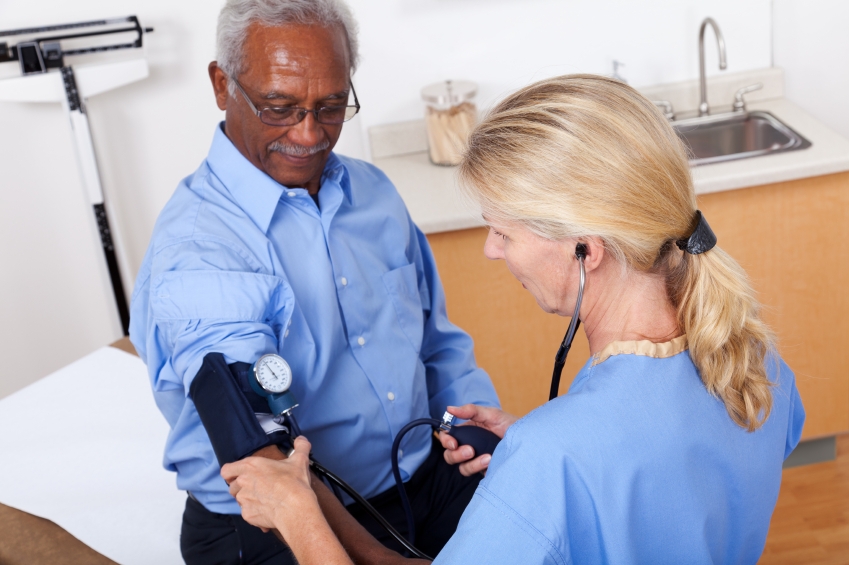Epidemiology: looking back on 2012 and looking forward to 2013
 2012 was a gratifying year, filled with discussions on future directions in epidemiology that were open, productive, and creative. The NHLBI Digital Forum has been one avenue of discussion and we appreciate all of the contributions that we received. Several of the discussions led to specific actions within the NHLBI’s Epidemiology Branch. A workshop is being planned for 2013 that will focus on the value, strengths, and weaknesses of embedding clinical trials within observational studies. A second workshop is being planned for 2013 assessing the role of existing medical data collection systems in surveillance of cardiovascular diseases. There will be additional emphasis on developing methods to obtain higher quality data at lower costs.
2012 was a gratifying year, filled with discussions on future directions in epidemiology that were open, productive, and creative. The NHLBI Digital Forum has been one avenue of discussion and we appreciate all of the contributions that we received. Several of the discussions led to specific actions within the NHLBI’s Epidemiology Branch. A workshop is being planned for 2013 that will focus on the value, strengths, and weaknesses of embedding clinical trials within observational studies. A second workshop is being planned for 2013 assessing the role of existing medical data collection systems in surveillance of cardiovascular diseases. There will be additional emphasis on developing methods to obtain higher quality data at lower costs.
In this post, we now ask an open question to our readers: for 2013, what do you think should be a high priority Funding Opportunity Announcement for observational studies that could be proposed by the NHLBI?
Posted by the Epidemiology Branch, NHLBI
Embedding clinical interventions in observational cohort studies
 An observational cohort study, with well-characterized participants, comprehensive event identification, and extensive infrastructure, may offer a platform to conduct clinical trials or community interventions. At the same time, an intervention could impact the data collection, analysis, and interpretation of longitudinal studies.
An observational cohort study, with well-characterized participants, comprehensive event identification, and extensive infrastructure, may offer a platform to conduct clinical trials or community interventions. At the same time, an intervention could impact the data collection, analysis, and interpretation of longitudinal studies.
What are the advantages and disadvantages of this hybrid design? What types of clinical or community interventions would be best in this scenario? How can epidemiology and clinical trial expertise be successfully integrated? Are there budgetary benefits to embedding interventions? How would participants and communities react to this model?
We are seeking input on these questions as we consider new research directions. We welcome your comments.
Posted by the Epidemiology Branch, NHLBI
Epidemiology and Comparative Effectiveness – How can epidemiology best contribute?
 Two seminal reports, the first by the Institute of Medicine and the second by the Patient-Centered Outcomes Research Institute, focus on the priorities for comparative effectiveness research (CER). An important question is the role that observational, rather than interventional, studies can play in addressing the priorities raised in these two reports. It is likely that both financial and feasibility issues will limit the number of trials that can be conducted. Some questions that we’d like to address include:
Two seminal reports, the first by the Institute of Medicine and the second by the Patient-Centered Outcomes Research Institute, focus on the priorities for comparative effectiveness research (CER). An important question is the role that observational, rather than interventional, studies can play in addressing the priorities raised in these two reports. It is likely that both financial and feasibility issues will limit the number of trials that can be conducted. Some questions that we’d like to address include:
· What areas of CER can be addressed by observational studies, particularly where trials may not be feasible?
· Can there be better analytical methods to control for indication bias in evaluating treatments?
· What can be contributed by existing cohorts, registries, medical data bases, and surveillance populations?
We welcome your comments and other questions that you would like to discuss.
Posted by the Epidemiology Branch, NHLBI
As “on-th e-job” training is replaced by structured approaches [Luepker RV], it becomes increasingly challenging to identify and train heart, lung, blood, and sleep epidemiologists in core competencies [Brownson RC, Samet JM, Thacker SB], while also providing learning opportunities that will foster multidisciplinary research in emerging scientific areas. Planning for the future entails preparing a new generation of highly skilled epidemiologists. We welcome your comments on how to make this happen.
e-job” training is replaced by structured approaches [Luepker RV], it becomes increasingly challenging to identify and train heart, lung, blood, and sleep epidemiologists in core competencies [Brownson RC, Samet JM, Thacker SB], while also providing learning opportunities that will foster multidisciplinary research in emerging scientific areas. Planning for the future entails preparing a new generation of highly skilled epidemiologists. We welcome your comments on how to make this happen.
Core questions for the Epidemiology Training Community include:
- How can NIH-supported research training and career development programs [Sumandea CA, Balke CW.] meet future heart, lung, blood, and sleep epidemiology needs?
- How can we increase demographic diversity across the epidemiology workforce?
- What is the optimal mix of instructional training vs. hands-on training for epidemiology, and do the criteria for NIH training and career development awards allow a mix of both?
- How can we inspire careers in epidemiology given the current, and hopefully temporary, reduction in research awards?
We are looking forward to an engaged conversation on these issues.
Posted by the Epidemiology Branch, NHLBI
Results-based accountability – beyond counting widgets
There is increasing demand to justify investments made in biomedical research (as discussed in these papers: Macilwain, Van Noorden, Ioannidis, Lauer). Some metrics that have been applied to individuals for performance evaluation and promotion, such as numbers of publications and citations, are now being applied to research projects.
Investigator-initiated and NIH-initiated studies are both facing increased pressure to show that they are worth the investment, but do we know how to define and create metrics to measure the value of these research investments? What are the appropriate metrics for productivity and impact of general biomedical research, and in particular epidemiology studies? What are the potential benefits and pitfalls? Since results-based accountability is increasingly being applied to biomedical research, what is the best approach?
Posted by Epidemiology Branch, NHLBI
What you have told us.
The discussions in this blog have been creative and informative. To give you a brief summary, we have paraphrased or quoted what you have told us. Please continue discussions on these topics and we will be posting additional critical questions.
What you have told us so far about…
- Can duplication be a specific review criterion during NIH peer review?
- Studies should replicate (not duplicate) by confirming results and improving research quality in the replication.
- Replication studies should be more carefully formulated in advance.
- Journals should more carefully address issues of duplication and design.
- Reviewers of grant applications should appraise projects by direct measures of scientific contribution.
- False positive single study results may be common but in the broader questions, false positives are fewer.
- Patience is required to confirm results to make policy recommendations.
- Use better statistical tools to establish how well replication leads to findings that can be generalized.
- Register aims in a public system when study is started to distinguish a priori hypotheses from data mining.
- Improve initial design with larger sample sizes to improve statistical power.
…cost-efficient study designs:
- We don’t need alternatives to cohort designs but smarter, cost-efficient use of them.
- Maybe research should be more inclusive of both mental and physical causes of disease.
- To identify targets for early intervention, including primordial, studies should begin at middle-age or younger.
- To encourage innovative research, a separate funding mechanism should be established for discovery epidemiology.
- Cheaper studies are not always cost effective since they reduce the range of research questions that can be asked.
- Study applications to NIH could have a formal systematic literature review of the research question to demonstrate the need for the proposed research.
- Instead of thinking about a less expensive study design, we might think about how technology will affect the study designs we have, and potentially reduce costs.
- Crowd sourcing designs should be explored by epidemiologists and biases carefully evaluated.
…electronic medical records (EMRs) for research:
- EMRs will be the cardiovascular epidemiology of the future.
- Experiences from countries with nearly universal use of a common EMR system will provide evidence on the value for EMR research.
- Uses could include identifying rarer cases for case-control studies, taking advantages of the large numbers various exposure-outcome relationships, and obtaining prevalence for conditions that are almost always require hospitalization.
- EMRs should be very useful for studying quality of care and finding unexpected associations requiring large samples.
- Potential advantages include efficiency and reduced cost, longitudinal follow-up, linking of EMR data to biorepositories.
- Research within an EMR will require robust standardization and will be hindered by fragmentation of care.
- Some exposures are poorly measured including physical activity, behavioral characteristics, and biological or imaging markers that are obtained only for clinical purposes.
- When universal, EMRs can provide data on the whole population and will reconnect epidemiology, public health and clinical research.
- A hybrid model with both cohort studies and linked EMR will take best advantage of each design.
- Further advances to other electronic data collection systems (home, cell phone, etc) could provide significant advances in important data needed for research.
- Many, if not most, electronic diagnoses require validation.
- There could be great potential for EMRs to be used as larger surveillance systems for CVD.
- Long term thinking on CV epidemiology may lead to less use of traditional models of cohort studies and more use of national EMR systems.
- While a broad generalization, most questions that can be answered in traditional cohort studies have already been answered.
- Using EMR data for epidemiology is possible, but with realism and careful selection of appropriate studies and outcomes.
- At a minimum, we might say that an EMR should always precede more expensive study designs and then identify the factors that might require moving to the cohort study or randomized trial.
…separate data collection and analysis funding:
- Separate funding works well for studies with more straight-forward data system, but not in complex longer-term studies requiring cross-talk between data collectors and analyzers.
- Investigators who design and conduct the study should have a larger role in analytic plan and writing up the data.
- If cohort studies were open to all, with confidentiality controls, they would be more widely used.
- Why not have NHLBI be a generator of open-source datasets on cardiovascular conditions?
Would it  be more cost efficient and maximize productivity to fund data collection separately from data analysis in NHLBI-initiated projects? Consider the National Health and Nutrition Examination Survey (NHANES) model: the survey content is determined mostly by government agencies, the data collection is performed by government contractors who are highly experienced in data collection, limited analyses are conducted by the funding agencies, the public-use data files are rapidly available for distribution from easily accessible public websites, and most analyses are conducted by researchers outside of the government.
be more cost efficient and maximize productivity to fund data collection separately from data analysis in NHLBI-initiated projects? Consider the National Health and Nutrition Examination Survey (NHANES) model: the survey content is determined mostly by government agencies, the data collection is performed by government contractors who are highly experienced in data collection, limited analyses are conducted by the funding agencies, the public-use data files are rapidly available for distribution from easily accessible public websites, and most analyses are conducted by researchers outside of the government.
What would be gained if we adopt a system that separates data colle ctors and data analyzers, funding the strongest bidders to each? What would we lose? Would separation of functions produce better science? What conditions would need to be satisfied to make the funding structure optimal?
ctors and data analyzers, funding the strongest bidders to each? What would we lose? Would separation of functions produce better science? What conditions would need to be satisfied to make the funding structure optimal?
Posted by the Epidemiology Branch, NHLBI




